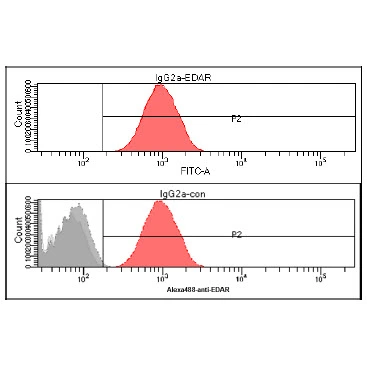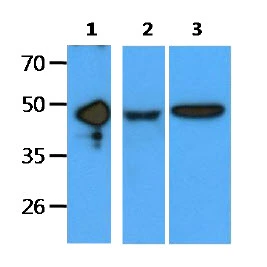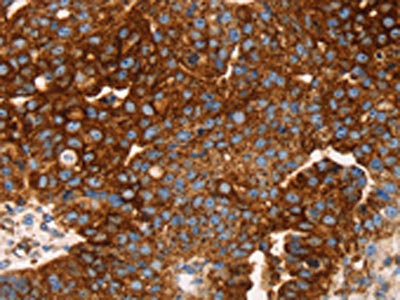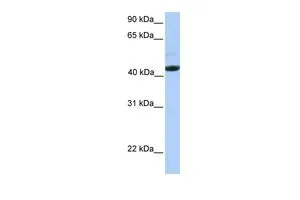
FACS analysis of HeLa cells using GTX57609 EDAR antibody. Cell Number: 1 x 10? cells Red: Primary antibody Antibody amount: 2-5 microg
EDAR antibody [AT19E8]
GTX57609
ApplicationsFlow Cytometry, Western Blot
Product group Antibodies
TargetEDAR
Overview
- SupplierGeneTex
- Product NameEDAR antibody [AT19E8]
- Delivery Days Customer9
- Application Supplier NoteWB: Recommended starting dilution is 1:1000.. *Optimal dilutions/concentrations should be determined by the researcher.Not tested in other applications.
- ApplicationsFlow Cytometry, Western Blot
- CertificationResearch Use Only
- ClonalityMonoclonal
- Clone IDAT19E8
- Concentration1 mg/ml
- ConjugateUnconjugated
- Gene ID10913
- Target nameEDAR
- Target descriptionectodysplasin A receptor
- Target synonymsDL, ECTD10A, ECTD10B, ED1R, ED3, ED5, EDA-A1R, EDA1R, EDA3, HRM1, tumor necrosis factor receptor superfamily member EDAR, EDA-A1 receptor, anhidrotic ectodysplasin receptor 1, downless homolog, downless, mouse, homolog of, ectodermal dysplasia receptor, ectodysplasin 1, anhidrotic receptor, ectodysplasin A1 receptor, hypohidrotic ectodermal dysplasia
- HostMouse
- IsotypeIgG2a
- Protein IDQ9UNE0
- Protein NameTumor necrosis factor receptor superfamily member EDAR
- Scientific DescriptionThis gene encodes a member of the tumor necrosis factor receptor family. The encoded transmembrane protein is a receptor for the soluble ligand ectodysplasin A, and can activate the nuclear factor-kappaB, JNK, and caspase-independent cell death pathways. It is required for the development of hair, teeth, and other ectodermal derivatives. Mutations in this gene result in autosomal dominant and recessive forms of hypohidrotic ectodermal dysplasia. [provided by RefSeq, Jul 2008]
- Storage Instruction-20°C or -80°C,2°C to 8°C
- UNSPSC12352203





